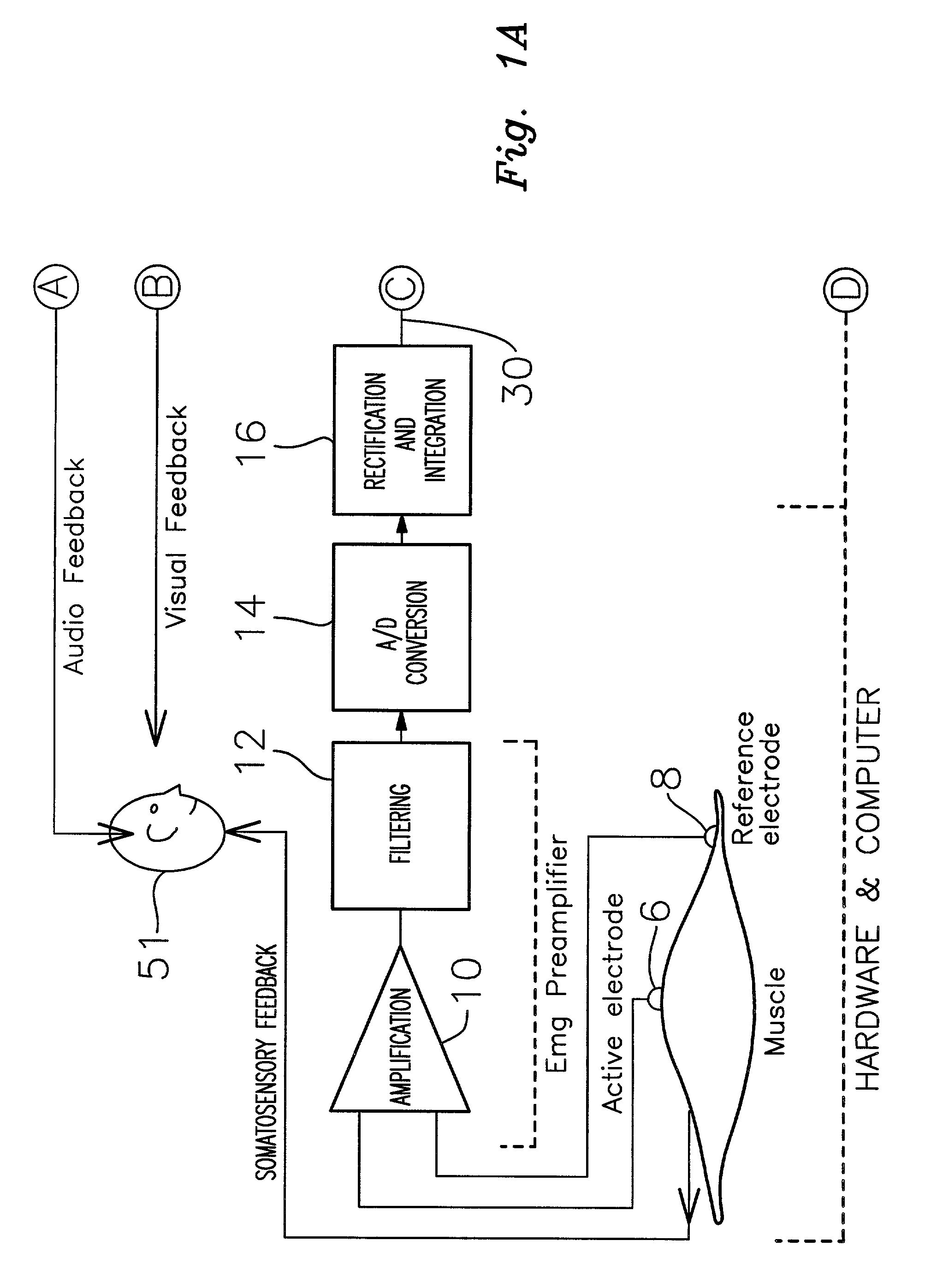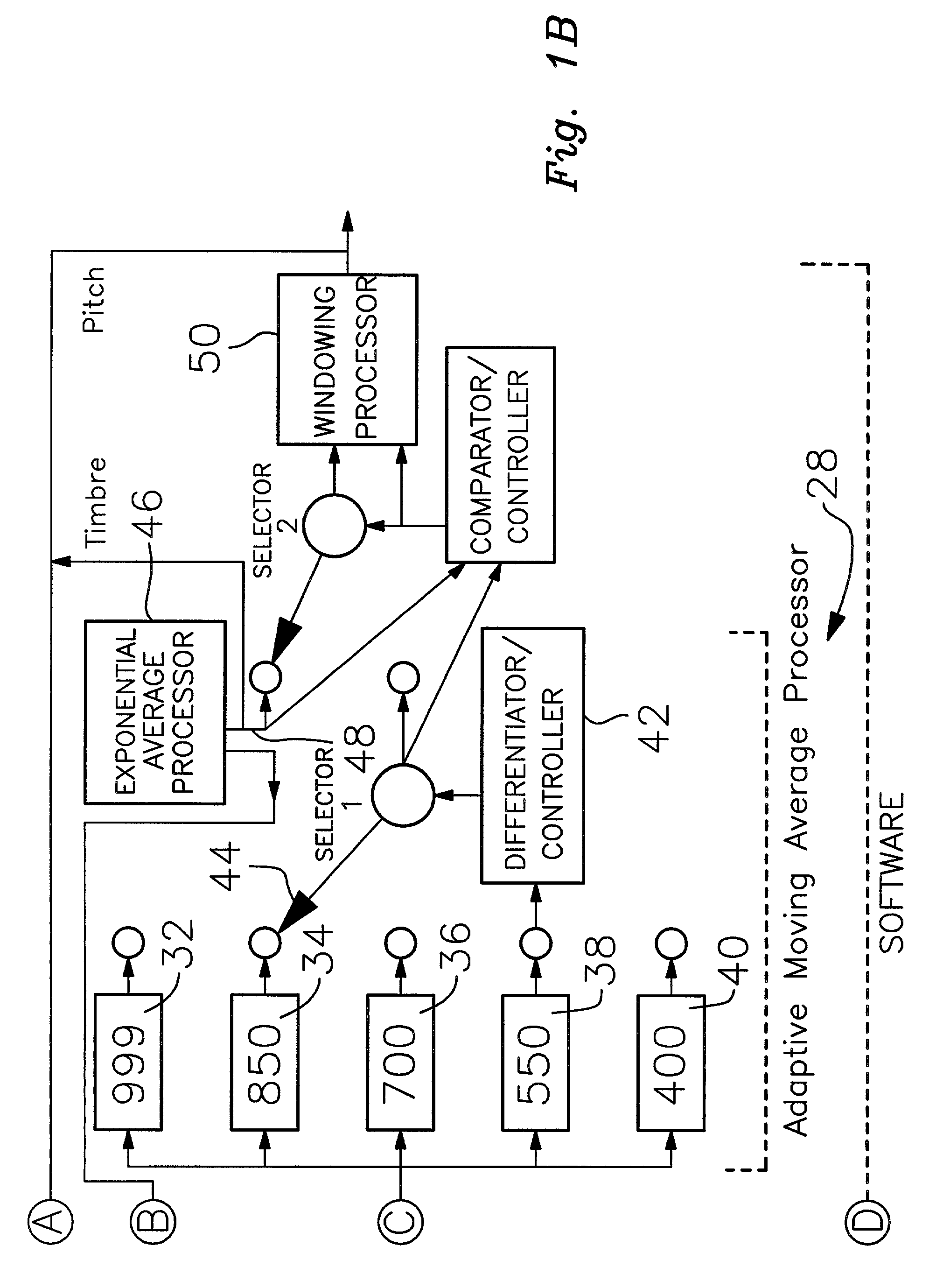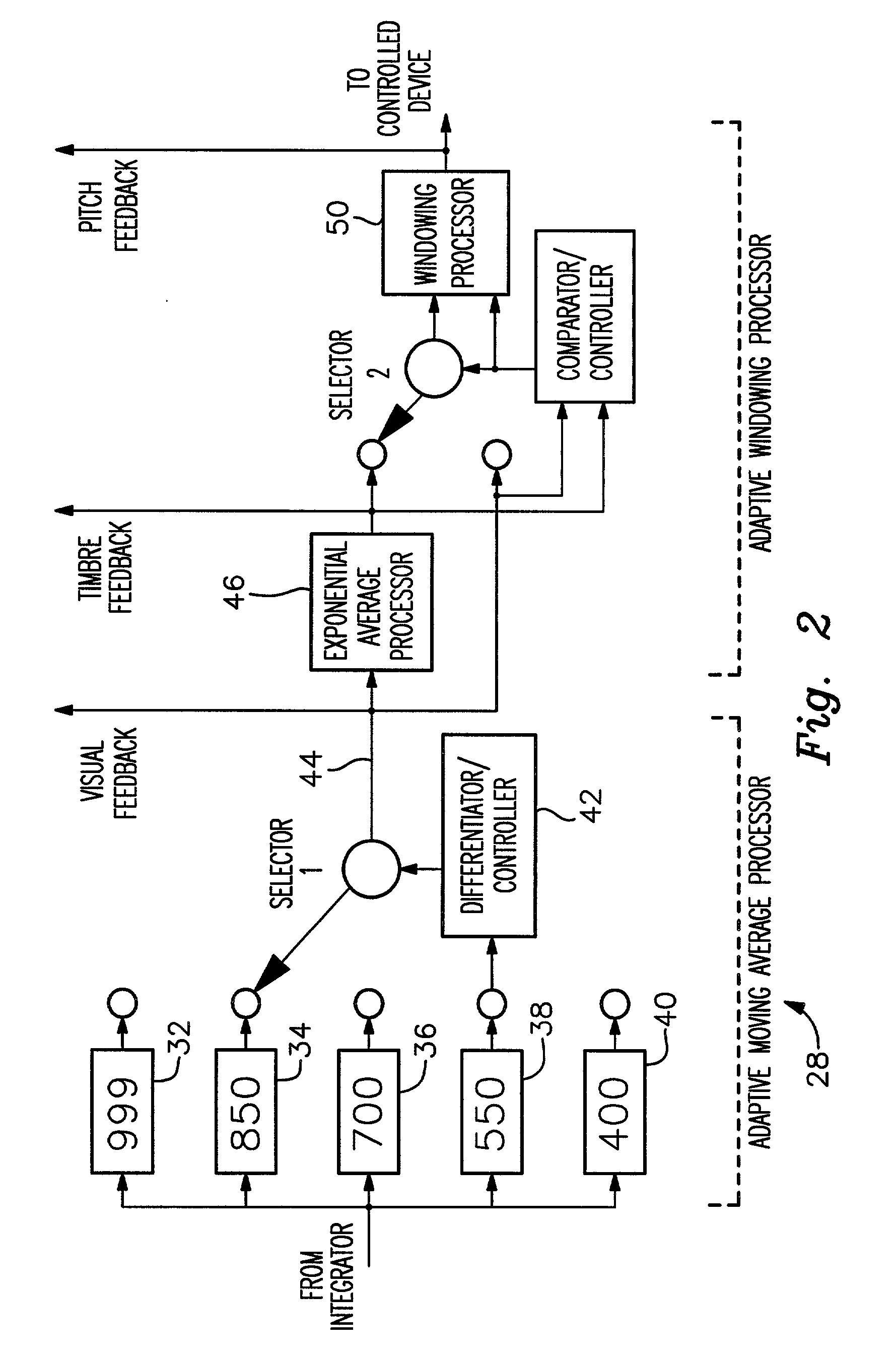Apparatus and methods for detecting and processing EMG signals
a technology of emg signal and apparatus, applied in the field of apparatus and methods for detecting and processing emg signal, can solve the problems of slow controller responsivity, small number of resolvable discrete control signal levels obtainable for myoelectric controllers, and limited use of surface emg or myoelectric controllers
- Summary
- Abstract
- Description
- Claims
- Application Information
AI Technical Summary
Benefits of technology
Problems solved by technology
Method used
Image
Examples
Embodiment Construction
[0131] A technique used in clinical medicine for positioning surface EMG electrode pairs was used in order to maximize the differential EMG signal input to the high impedance amplifier. The active electrode input to the differential amplifier is recorded from over the motor end plate of the muscle and the reference electrode input is recorded from over a neutral location (i.e., either over a tendon or tendon insertion to a bone). The distance between the electrodes varies depending on the anatomy of the individual being tested.
[0132] Sample myoelectric control signals were generated from the right abductor pollices brevis (APB), the extensor carpi radialis (ECR), and the biceps (BCP) muscles of a normal male test subject, age 49. Active surface electrodes were placed over a less electrically active area (for the abductor pollices brevis muscle, the reference electrode was placed over the proximal phalangeal metacarpal joint; for the extensor carpi radialis muscle, the reference elec...
PUM
 Login to View More
Login to View More Abstract
Description
Claims
Application Information
 Login to View More
Login to View More - R&D
- Intellectual Property
- Life Sciences
- Materials
- Tech Scout
- Unparalleled Data Quality
- Higher Quality Content
- 60% Fewer Hallucinations
Browse by: Latest US Patents, China's latest patents, Technical Efficacy Thesaurus, Application Domain, Technology Topic, Popular Technical Reports.
© 2025 PatSnap. All rights reserved.Legal|Privacy policy|Modern Slavery Act Transparency Statement|Sitemap|About US| Contact US: help@patsnap.com



